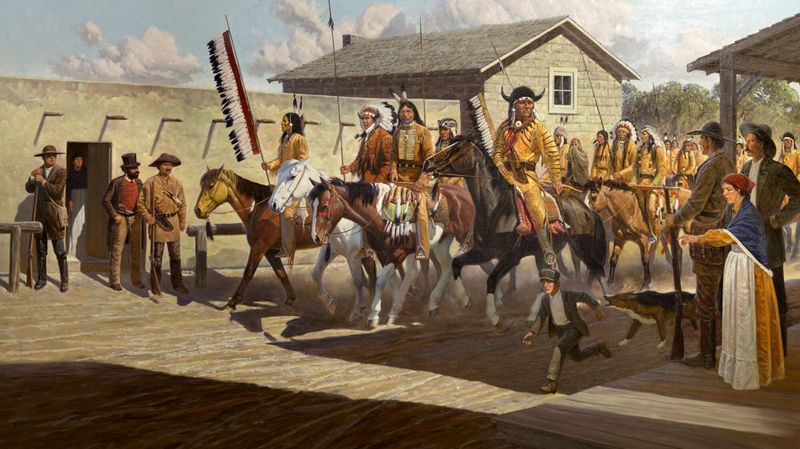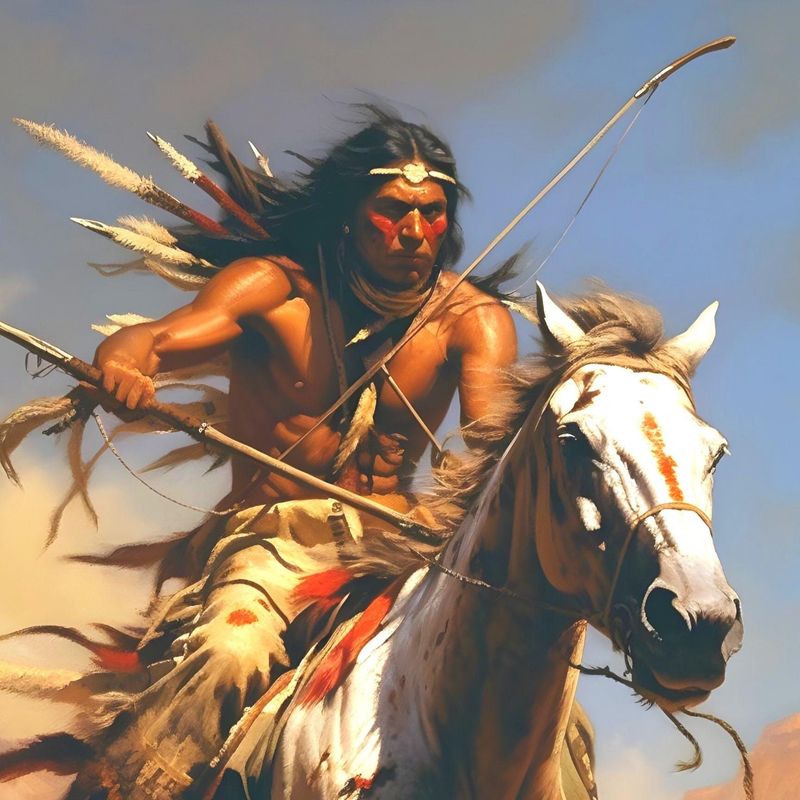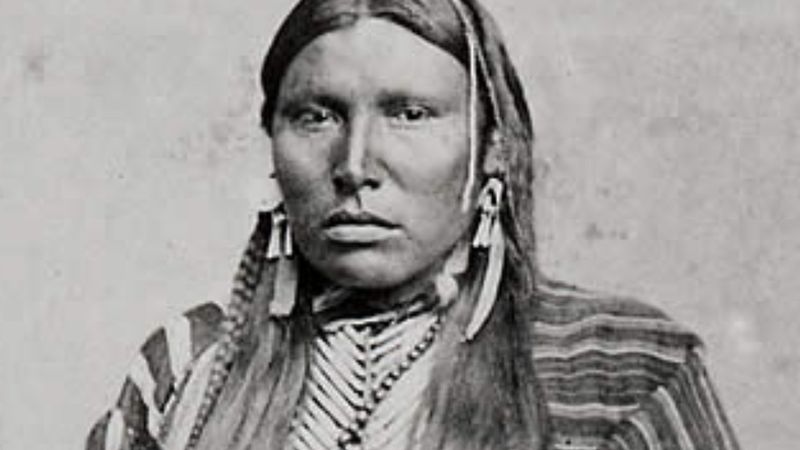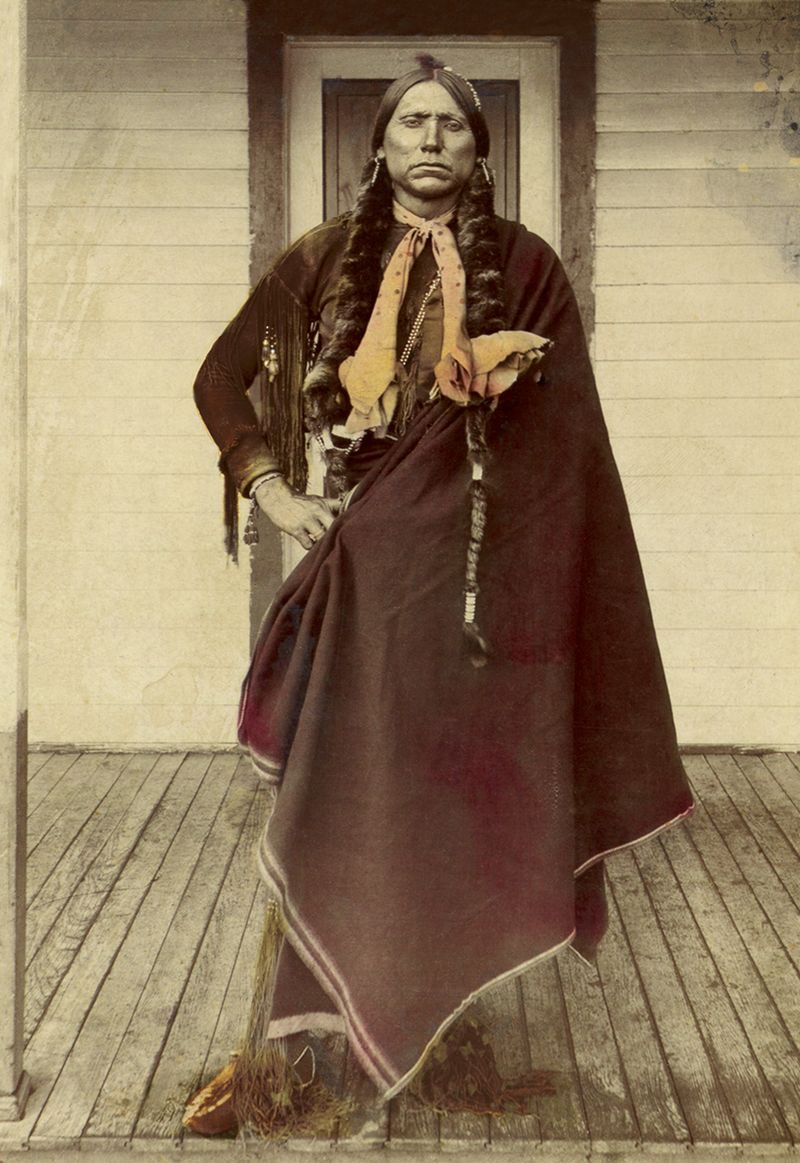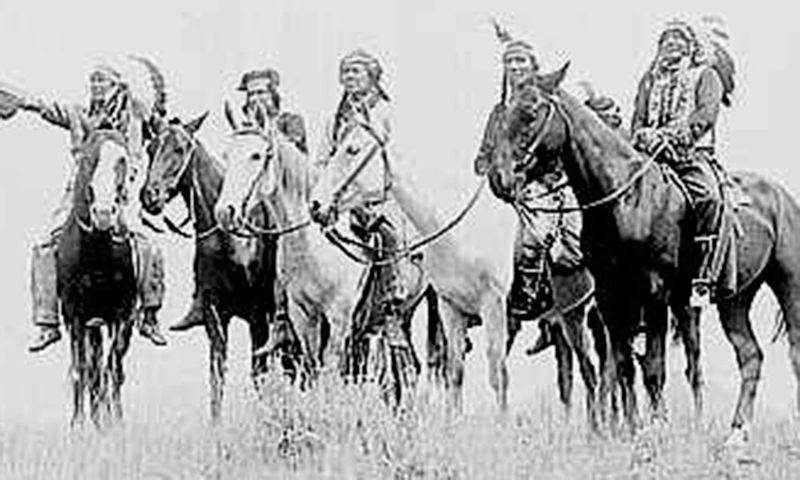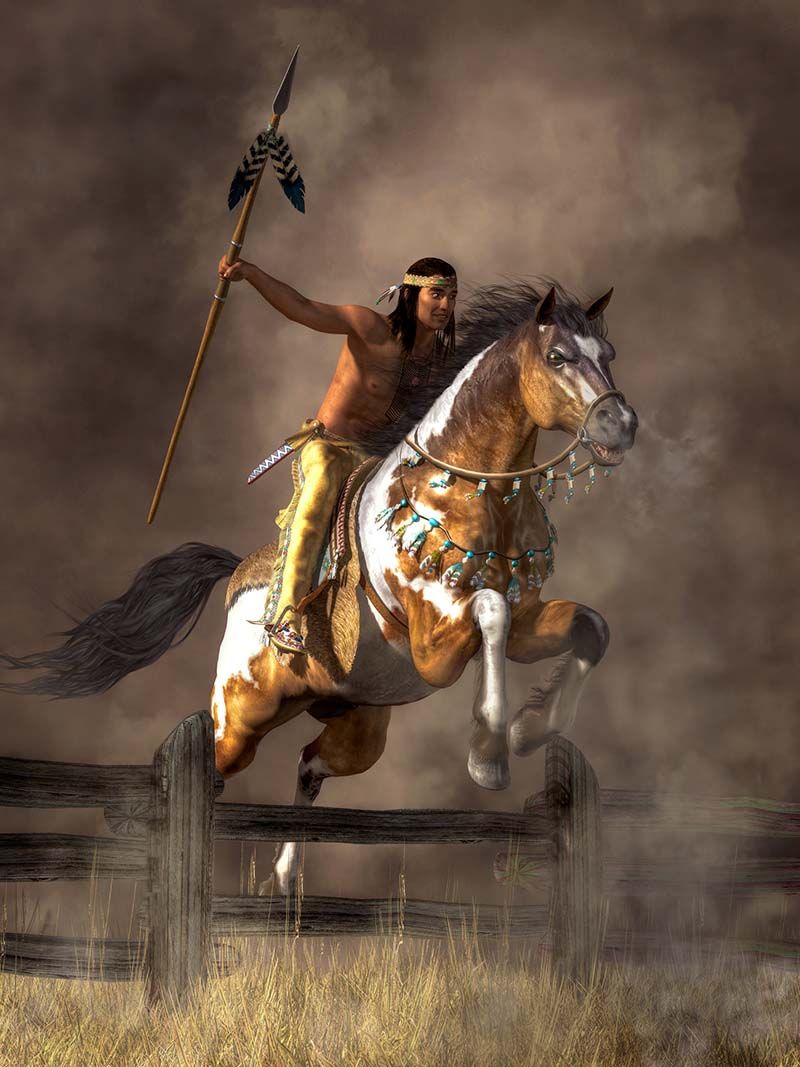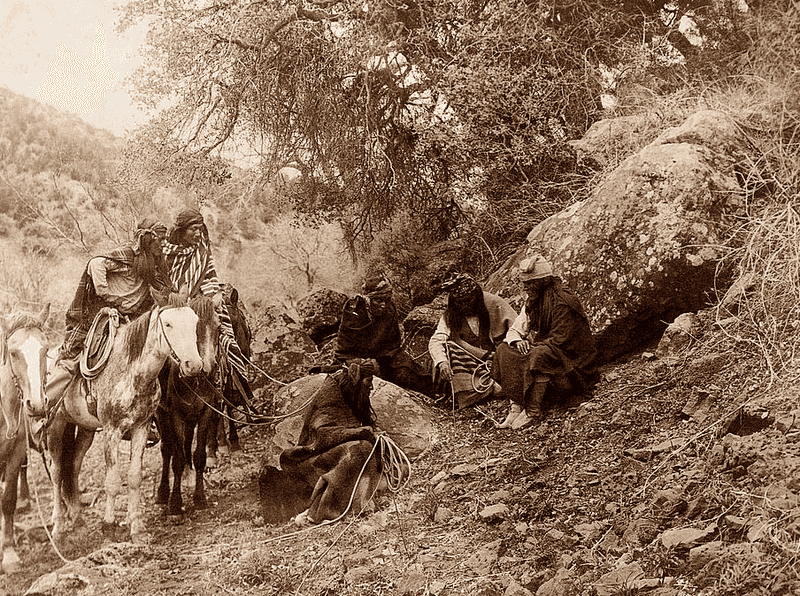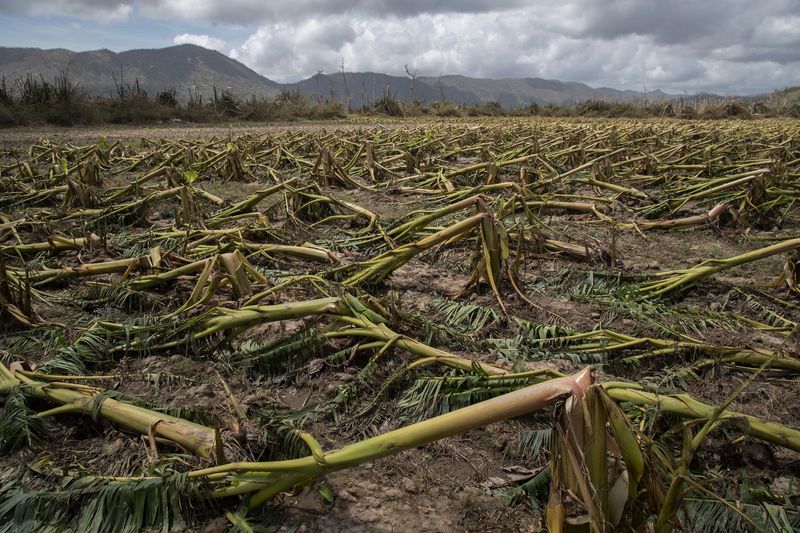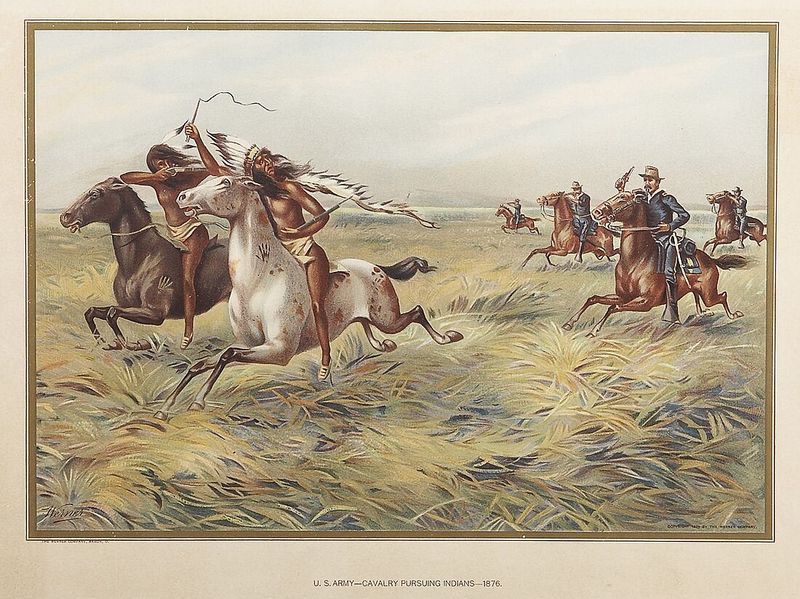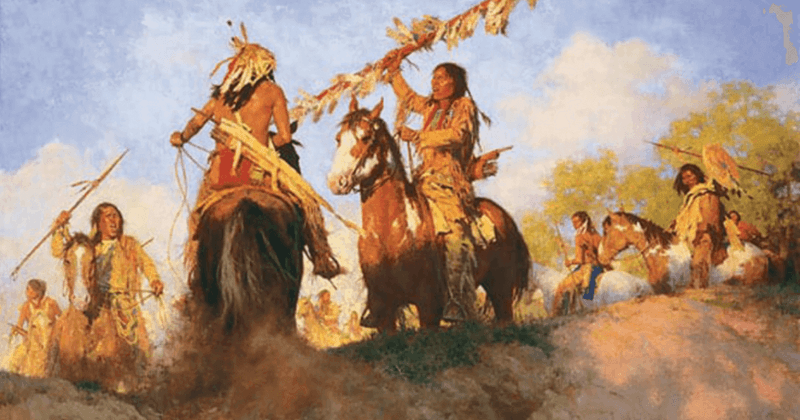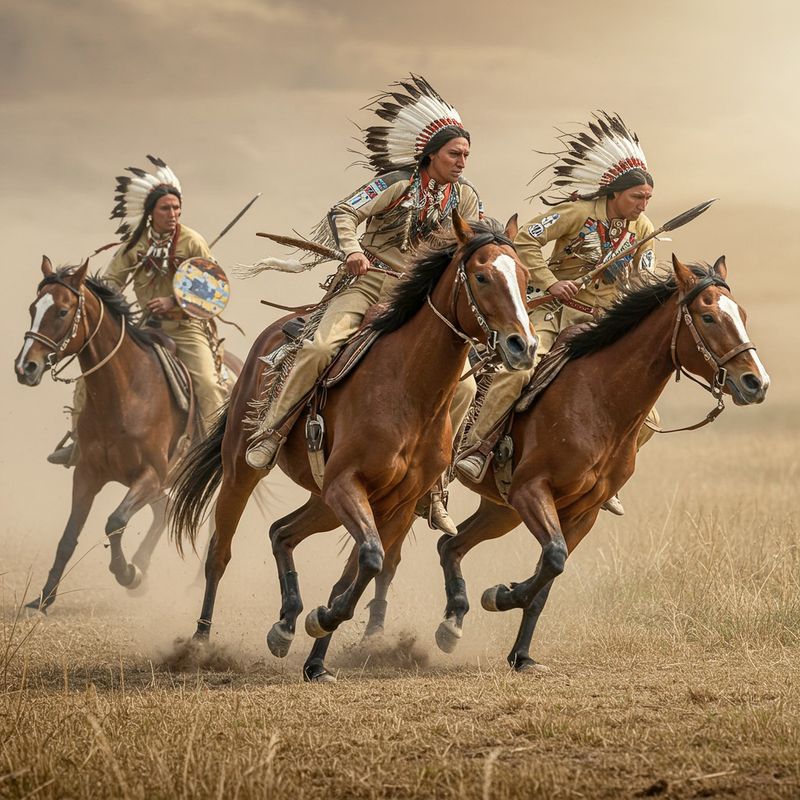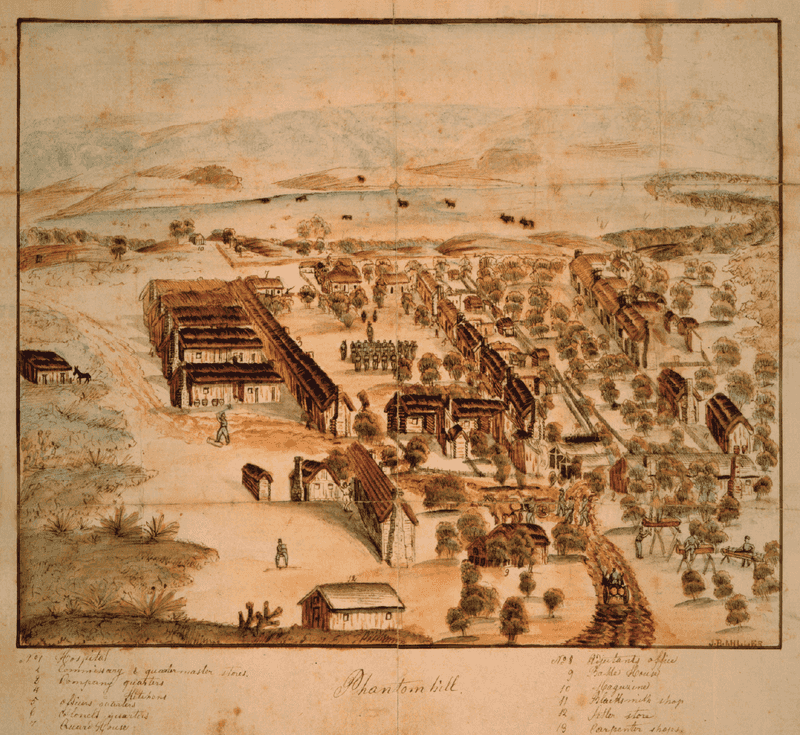The Comanche dominated the Southern Plains for over a century, creating what historians call an ’empire’ through their masterful raiding strategies.
Their lightning-fast attacks and superior horsemanship skills struck fear into frontier settlements from Texas to Mexico.
The tactics they developed weren’t just effective—they fundamentally altered the course of American westward expansion and created lasting impacts on military strategy.
1. Lightning Raids
Warriors appeared from nowhere, struck with devastating force, and vanished before organized resistance could form. Their attacks happened so quickly that survivors often described them as sudden as lightning strikes.
Families had mere seconds to react. Many never even reached their weapons before being overwhelmed. This speed-based approach completely upended traditional European warfare concepts that relied on formation, discipline, and sustained engagement.
2. Hit-and-Run Warfare
Refusing conventional battle tactics, Comanche raiders never stayed in one place long. They would strike a settlement, gather what they wanted, and disappear across the vast plains before military units could respond.
Army commanders grew frustrated chasing ghosts. By the time soldiers arrived at a raided homestead, the warriors might already be 30 miles away. This mobility-focused approach made the Comanche nearly impossible to defeat through standard military operations.
3. Nighttime Assaults
Darkness became the Comanche’s closest ally. They specifically timed many raids for the darkest hours when settlers were most vulnerable and disoriented.
Families would wake to the sound of breaking doors or burning roofs. The psychological impact of being attacked while sleeping left deep scars on frontier communities. Many survivors reported never again being able to sleep soundly, constantly listening for hoofbeats in the night.
4. Master Horsemanship
Boys as young as five began training in riding techniques that would later save their lives in battle. Warriors could hang off the side of a galloping horse, using the animal’s body as a shield while firing arrows from underneath its neck.
Spanish observers wrote of Comanche riders who could pick up objects from the ground at full gallop. This unparalleled mounted combat ability gave them tremendous advantages against settlers and military units who fought primarily on foot.
5. Feigned Retreats
Appearing to flee in panic, Comanche warriors would deliberately show fear to entice pursuers. Settlers or soldiers, believing they had gained the upper hand, would chase after them, breaking formation and protective positions.
The retreat suddenly transformed into an ambush. Once pursuers were isolated and vulnerable, warriors would wheel around and attack with overwhelming force. Military commanders eventually learned to warn troops against pursuing seemingly retreating Comanche bands.
6. Ambush Tactics
Natural features like creek beds, ravines, and rock formations became deadly traps under Comanche control. Warriors would study travel routes and identify perfect ambush locations where victims would be most vulnerable.
Wagon trains frequently fell victim to these carefully planned attacks. The Comanche would wait until the precise moment when escape was impossible, then strike from multiple directions. Some warriors specialized in finding and memorizing ideal ambush locations across their territory.
7. Multi-Angle Attacks
Unlike European-style warfare with its front lines, Comanche raids came from everywhere at once. A small raiding party might split into three or four groups, each attacking from different directions simultaneously.
Defenders couldn’t concentrate their fire effectively. The chaos and confusion created by these multi-directional assaults often led to panic. Settlers would waste ammunition shooting wildly while warriors methodically picked off targets one by one.
8. Psychological Shock Warfare
The aftermath of raids was deliberately crafted to instill maximum terror. Warriors sometimes mutilated victims in specific ways meant to send messages to other settlements.
News of these gruesome scenes spread rapidly across frontier communities. A single brutal raid could cause multiple nearby settlements to be abandoned out of fear. Military reports from the era reveal that psychological impact often exceeded the actual physical damage of raids.
9. Strategic Use of Terrain
Few people understood the landscapes of Texas and the Southern Plains better than Comanche warriors. They used every geographic feature to their advantage—tall grass for concealment, hills for observation posts, rivers for ambush points.
Settlers often built homes in locations that seemed secure but were actually vulnerable to attack. The Comanche knew which ravines offered silent approach routes and which ridgelines provided clear shooting positions. This intimate knowledge of terrain made even small raiding parties devastatingly effective.
10. Disruption of Settler Infrastructure
Rather than random violence, Comanche raids targeted critical infrastructure with surprising strategic insight. They attacked stagecoach stations, destroyed bridges, and raided supply wagons carrying essential goods.
These systematic disruptions could paralyze entire regions. Without reliable transportation or supply lines, settlements became isolated and vulnerable. Military commanders noted that the Comanche seemed to instinctively understand which targets would cause maximum disruption to frontier expansion.
11. Crop and Livestock Destruction
Starvation became a weapon in the Comanche arsenal. During raids, warriors would systematically destroy food stores, burn fields ready for harvest, and kill livestock they couldn’t take with them.
The impact lasted long after raiders departed. Families who survived the initial attack often faced hunger in the following months. This calculated approach to resource destruction forced many settlements to be abandoned even when buildings remained standing.
12. Taking Captives
Children playing outside would vanish during lightning raids. Women were frequently targeted while working in gardens or fetching water. The Comanche specifically sought captives during many of their attacks.
Some captives were ransomed back at trading posts for horses, guns, or supplies. Others, especially children, were adopted into the tribe and raised as Comanche. The fear of captivity haunted frontier families and motivated many to abandon otherwise promising settlements.
13. Dismantling Communication Lines
Messengers carrying dispatches between military outposts became prime targets. Warriors would track and eliminate these couriers, effectively blinding military commanders to developments across their territory.
Telegraph lines, once established, were systematically cut. Without reliable communication, coordinated responses to raids became nearly impossible. Settlements under attack had no way to call for help, and military units couldn’t effectively share intelligence about Comanche movements.
14. Total Surprise
Unpredictability became a hallmark of Comanche warfare. They might raid during thunderstorms when gunpowder would be damp, or during religious holidays when vigilance was lower.
No pattern emerged that settlers could prepare for. Some bands attacked at dawn, others at dusk, some during brightest day. Military analysts noted with frustration that predicting Comanche movements was virtually impossible because they deliberately varied their tactics to maintain the element of surprise.
15. Silent Coordination
Hand signals and whistles replaced shouted commands during Comanche raids. Warriors could communicate complex tactical information without making a sound that would alert potential victims.
Settlements might not realize an attack was imminent until warriors were already among them. This silent approach stood in stark contrast to other Plains tribes who often announced their presence with war cries. The silence itself became psychologically terrifying to frontier communities.
16. Seasonal Timing
Harvest time proved especially vulnerable for frontier farms. Comanche raiders knew settlers would be focused on gathering crops, with weapons set aside during this busy period.
Christmas and Easter saw increased raids as well. Families gathered in celebration made ideal targets, with multiple victims concentrated in one location. Military records show clear seasonal patterns in raid frequency, demonstrating the strategic planning behind what appeared to settlers as random violence.
17. Disguise and Deception
Warriors occasionally approached settlements wearing captured military uniforms or settler clothing. This deception allowed them to get close without raising alarms.
Some Comanche raiders learned enough Spanish or English to call out false greetings. Settlers who opened their doors to what appeared to be friendly visitors found themselves suddenly under attack. These psychological tactics undermined trust and increased paranoia throughout frontier communities.
18. Intergenerational Warrior Training
Young boys learned to ride before they could walk. By age ten, future warriors were already participating in buffalo hunts that taught skills directly applicable to raiding.
Teenage boys joined their first raids as observers, learning tactics from experienced warriors. This comprehensive training system created fighters with instinctive combat abilities. Military officers frequently noted that even teenage Comanche warriors displayed fighting skills superior to trained soldiers.
19. Use of Stolen or Traded Firearms
Comanche raiders quickly adapted European weapons to their fighting style. They modified rifles for use on horseback by shortening barrels and removing unnecessary parts.
Warriors became exceptionally accurate with these customized weapons. Many could hit moving targets while riding at full gallop. Spanish and American authorities frequently complained about traders who supplied firearms to the Comanche, recognizing how effectively these weapons were being used against settlements.
20. Avoiding Direct Occupation
Unlike European armies who conquered and held territory, Comanche raiders struck and then disappeared into the vastness of the plains. They controlled huge regions without permanently occupying specific locations.
This ghostlike approach frustrated military responses. There were no Comanche “forts” to attack, no permanent villages to target in retaliation. The entire Comanche strategy revolved around mobility and avoiding fixed positions that could be counterattacked.
21. Targeting Weak Settlements First
Careful observation preceded every major raid. Warriors would study potential targets for days, identifying the most vulnerable settlements with fewer men or weapons.
This methodical approach minimized Comanche casualties. Small, isolated homesteads often suffered first, followed by increasingly larger targets as warriors gained experience and confidence. Military analysts noted that Comanche raids appeared random to settlers but actually followed logical patterns of increasing difficulty.
22. Burning Abandoned Forts or Outposts
Symbolic destruction became a powerful message across the frontier. When settlers abandoned locations due to Comanche pressure, warriors would return to burn structures to the ground.
These deliberate acts of demolition served both practical and psychological purposes. Practically, it prevented easy reoccupation. Psychologically, the blackened ruins visible across the landscape served as stark warnings to other would-be settlers about Comanche dominance of the territory.



